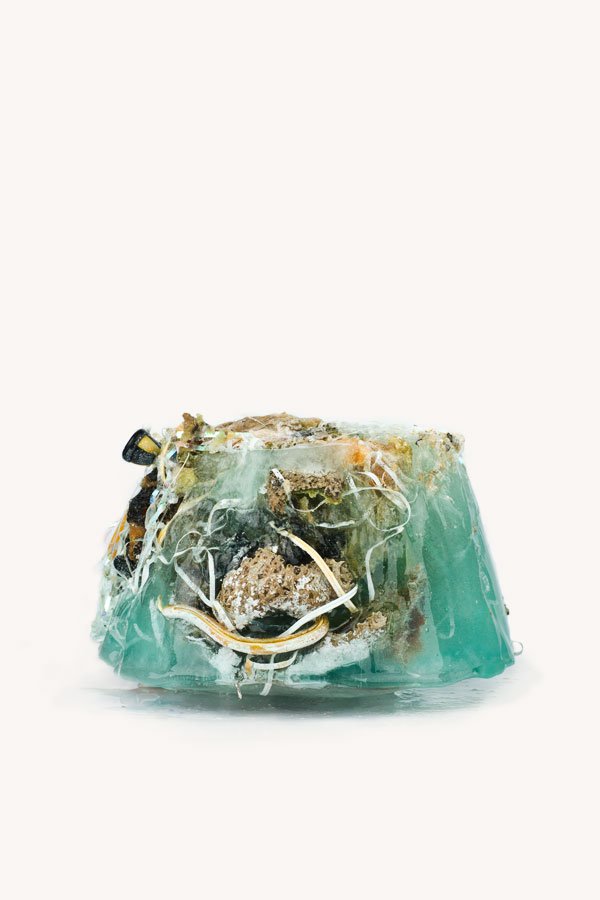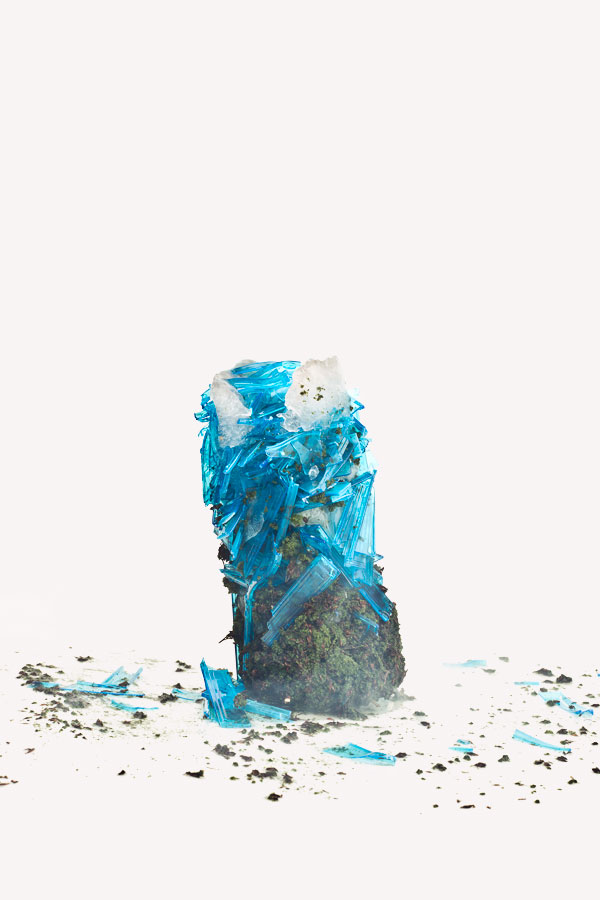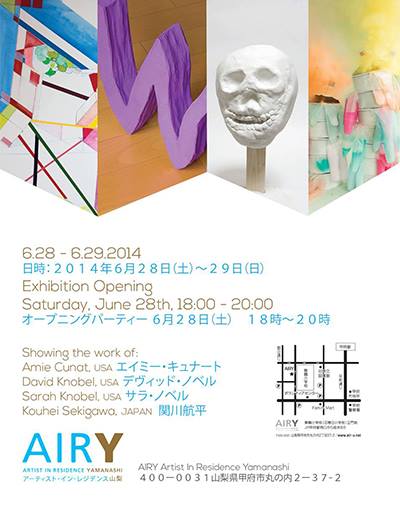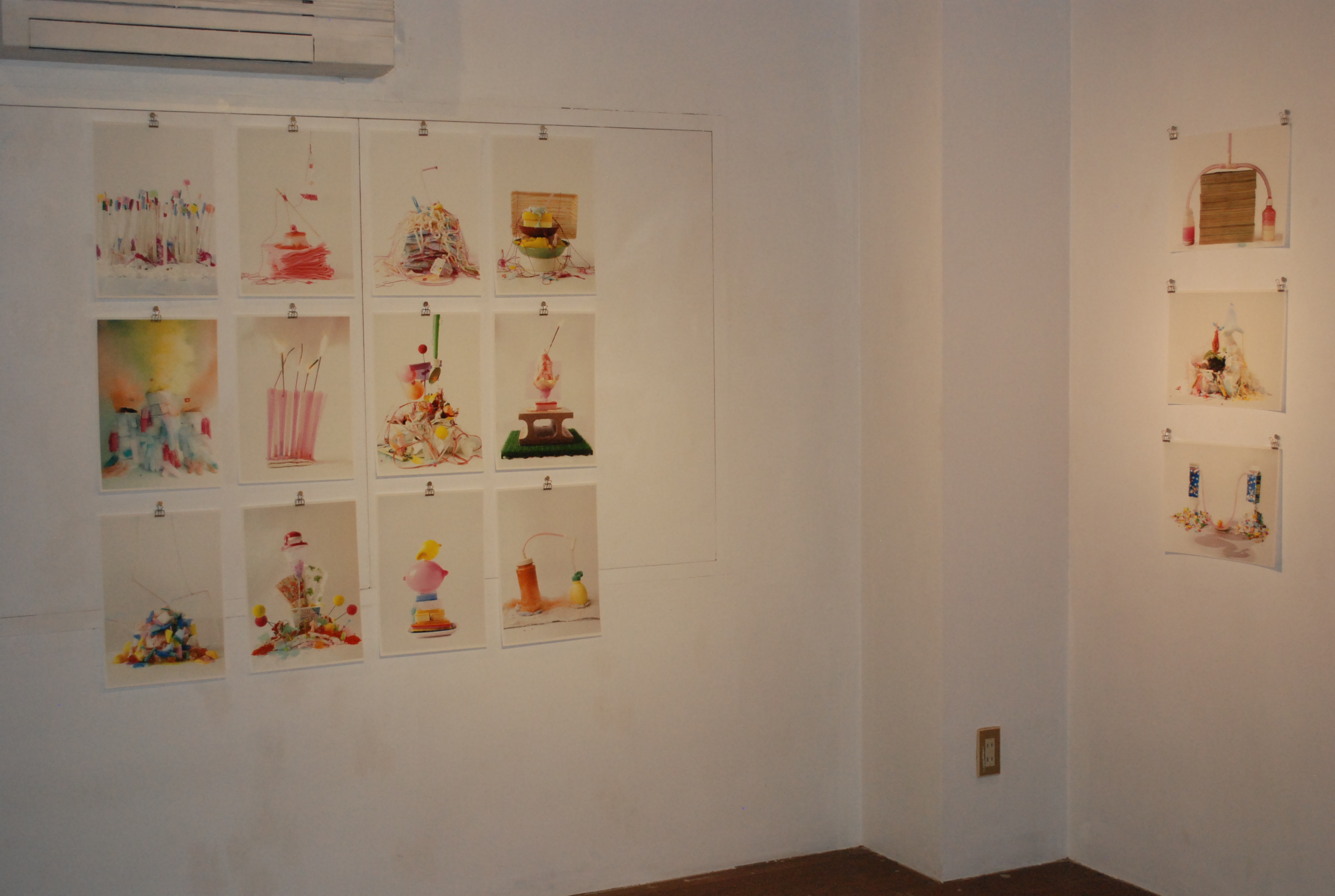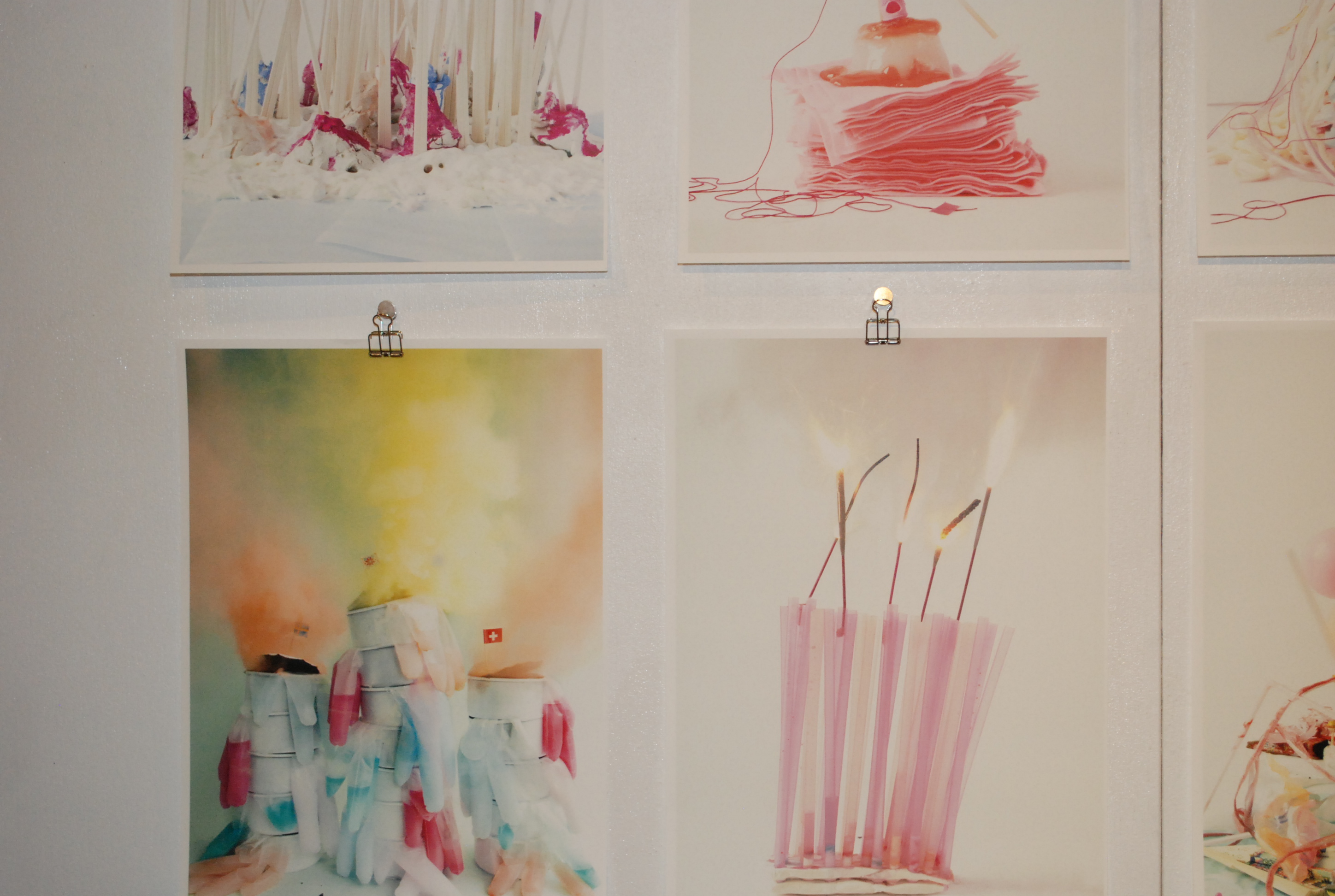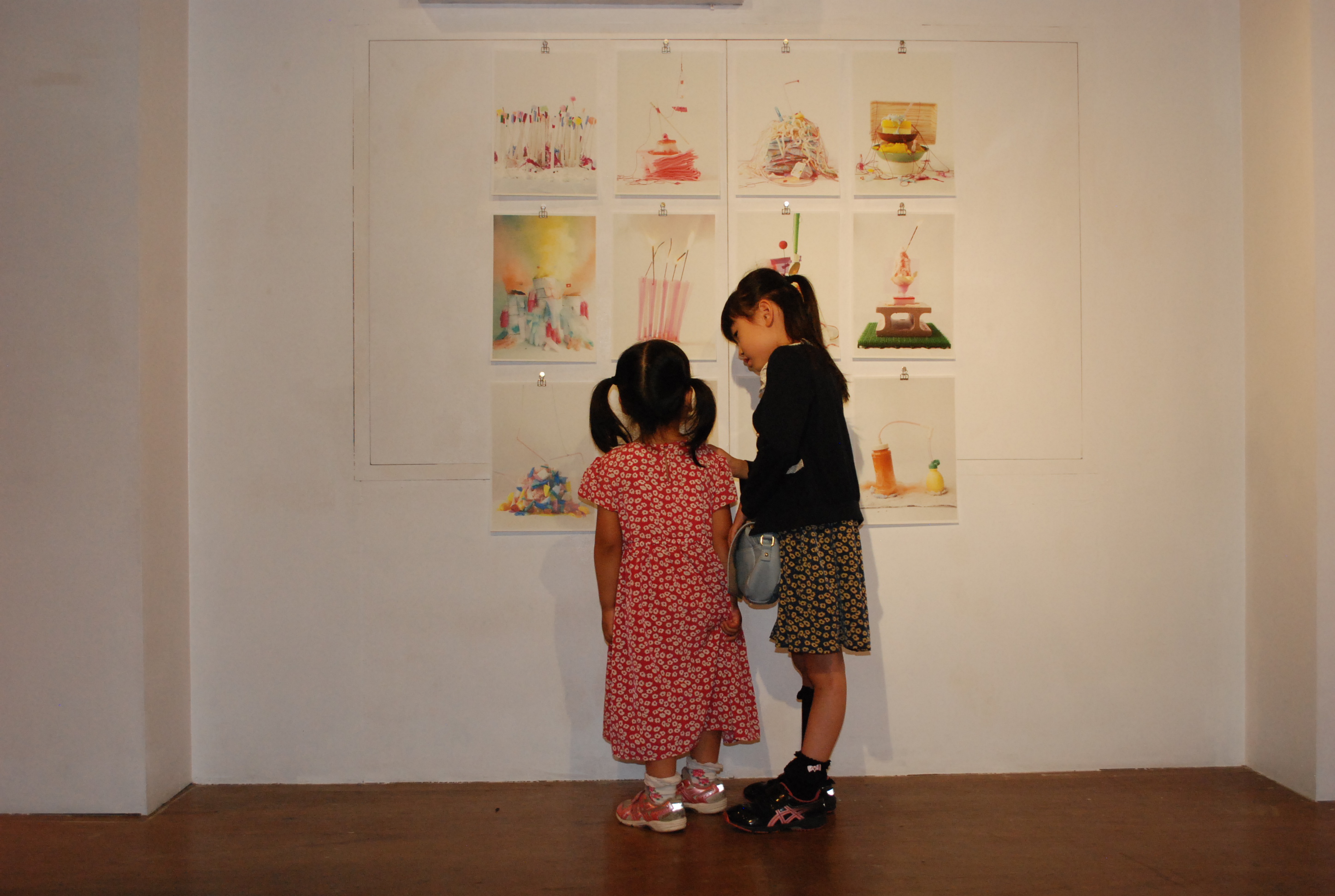photography, video, installation
June 2014
www.sarahknobel.com
/
サラ・ノベル
アメリカ合衆国 モンタナ州
2014年 6月
写真、ビデオ、インスタレーション
+
+
+
videostill 2013
/
icescape_5
/
icescape_3
+
+
+
My current body of work, Icescapes, looks at how the process of photography can communicate two-dimensional spaces and reinterpret our focus on materials. The work is influenced by the history of the landscape and objectivity within photography. Recently moving to Montana from Washington DC, I immediately noticed a clear struggle between the idyllic landscapes surrounding the town and the industrial space created by our occupation. These visual dualities incited various reactions within my mind and I began to consider ways in which I could deal with this new and intriguing space.
For this series, I was looking for ways to construct scenes through new and accessible components. I have used household items placed in molds that are then frozen. The variety of textures, colors and striking features become apparent as the ice structure begins to disintegrate. Photographs are taken during various melting phases of the ice. Through-out the process the synthetic materials begin to mimic natural formations. The ephemeral nature of the material references the fragility of the natural world and our impact upon it within a brief time period in relation to its existence without humankind.
Each Icescape can also be seen as a new object. Displayed with a plain white background, the images mimic still lives and product photography. This process isolates the objects and removes their sense of scale. There becomes a challenge of perception, which disembodies each material from its known context. In addition, it has a relation to similar temporal materials used in traditional still life and nature morte, where the chosen items demonstrate decay and the wealth of commodities.
The variety of textures and colors in the ice works are made from cheaply made toys, party items, souvenirs, and decorative household goods that were mostly purchased at dollar stores. The objects suspended in the ice bare a negative connection to our current culture with its wealth of temporal commodities and the lack of power that they reference. This opposes the traditional views presented in nature morte and traditional still lives, which are prideful displays of power and wealth.
In conclusion, Icescapes is about abstractions. There are multiple ways of interpreting each image as landscape, object or artifact. This work for me was a study; a new way of identifying our relationship with the natural and synthetic materials that surround us.
/
わたしの最近の作品「アイス・スケープ」シリーズは、写真はどのようにして二次元空間における過程を写し出せるか、物質に対する焦点を再解釈できるかということにある。作品は写真における風景と物体の歴史に影響を受けている。近年ワシントンDCからモンタナ州に移り住んですぐに気づいたことは、街を囲む牧歌的な風景と仕事の場である産業地区にはっきり分かれていることだ。この視覚的な二つの区分はわたしの中で様々な反応を起こし、目の前の新しくて好奇心をそそる地域をどのように論じるかを考え始めた。
このシリーズでわたしは新しくかつ入手しやすい物体を使ってシーンを構成するやり方を探していた。そして家財道具を方に入れて凍らせてみた。手触りの違いや色などの多様性は、氷の崩壊とともに様相を見せる。写真は氷が溶けて様々な様相を見せる間に撮られる。その過程を通して、合成の物質は自然の形への模倣を始める。このはかない現象は自然界のこわれやすさに言及し人類以外の存在が関与する。
それぞれの風景は新しい物体のようにも見える。白を背景に展示されるとそのイメージは静物と写真製品を擬態している。この過程は物体を超然とさせ尺度の感覚を後退させる。
それは知覚の挑戦であり、これまで認識していた文脈からは分離したものになる。加えて伝統的な静物と自然のモルタルに使われる素材は、似通った一時的な素材と関係がある。選ばれた素材は日用品の富と衰退とを実証しているのだ。
氷作品の中の素材や色は、ほとんどが1ドルショップで買ったおもちゃ・パーティーグッズ・おみやげや装飾的な家庭用品などの格安品だ。氷のなかに漂う物体は、一時的な日用品の富と力の衰退という我々の流行文化をあらわにする。これに対して、自然のモルタルと伝統的静物であらわされる風景は力と富による自信に満ちた展示である。
最後に、風景は抽象である。風景・物体・人工物を解釈する方法は多様だ。それはわたしにとって研究であり、我々を取り巻く自然物と人工素材を証明する新しい方法なのだ。
/
/
/
/
/
/
/
[Showing the works of]
28th 29th June 2014 @AIRY
/
/
/
/
/
/
/


